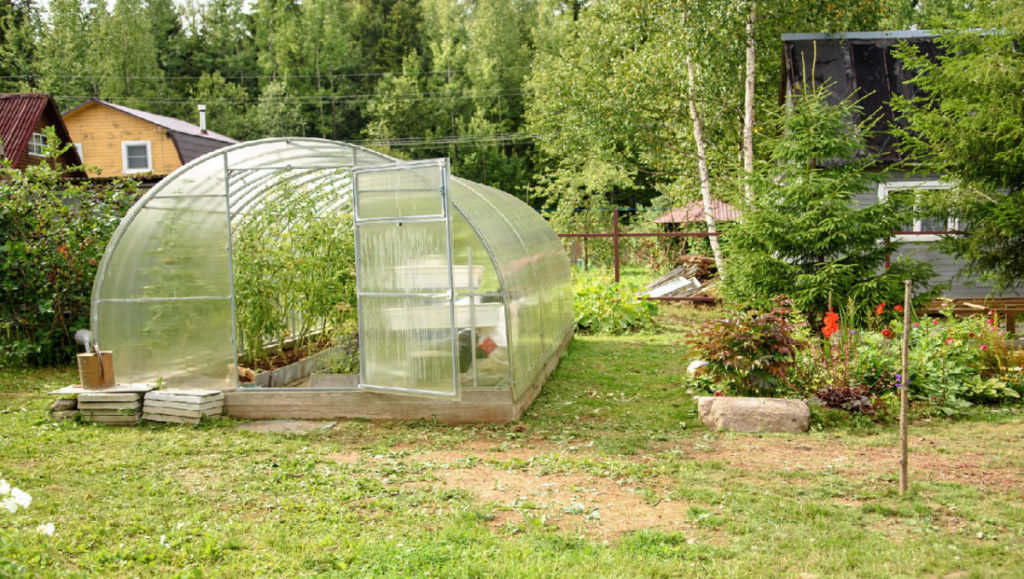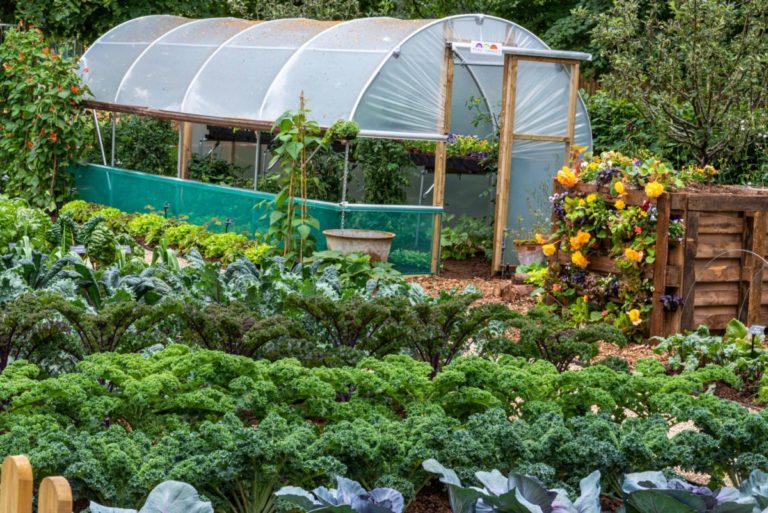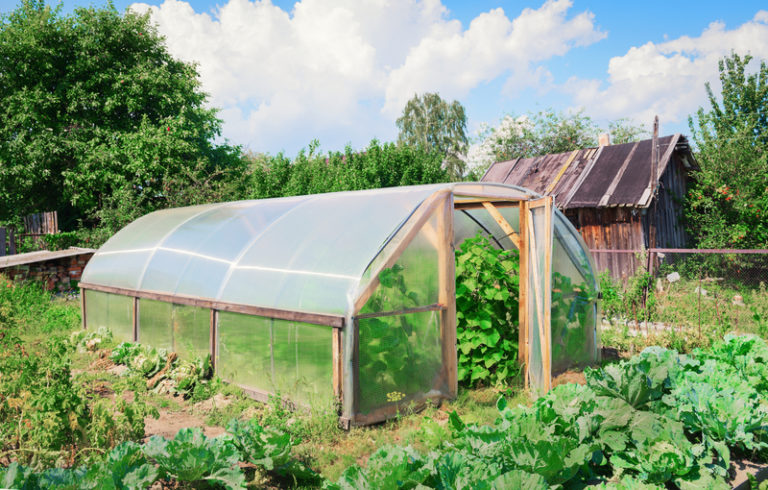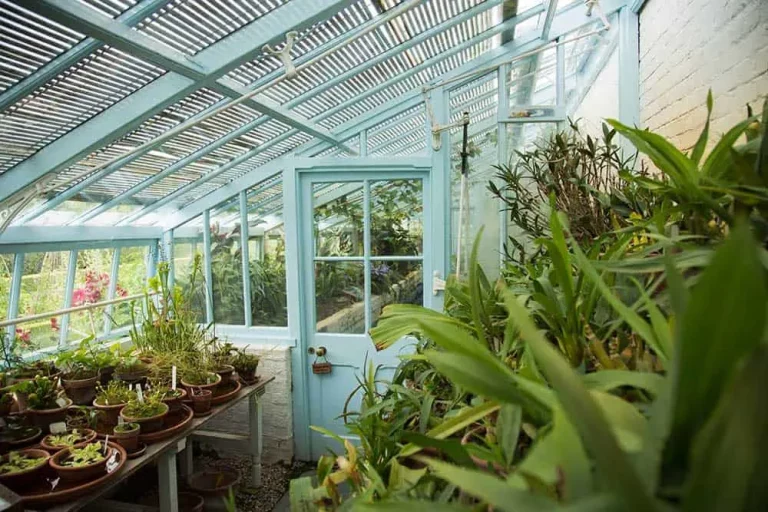Are you tired of having to wait for months before planting your favorite crops in your greenhouse?
Do you want to squeeze out more yield from your investment and enjoy a longer growing season?
If so, then look no further!
With these easy-to-implement strategies, you can extend the growing season in your greenhouse by up to six weeks or more.
From intelligent temperature control systems to utilizing natural lighting and ventilation techniques, we will explore effective ways to maximize the use of your greenhouse space and boost productivity all year round.
Whether a seasoned grower or just starting out, this guide is perfect for anyone looking to take their greenhouse operations to the next level.
So let’s get started!
Use passive solar design
Build your greenhouse with passive solar design in mind, using large south-facing windows to capture natural light and heat from the sun. This will help to extend the growing season by providing a longer period of warmth and light for your plants.
By positioning large south-facing windows, you can effectively capture natural light and heat from the sun, which will be stored and distributed throughout the greenhouse through appropriate materials and design features.
The use of passive solar design in greenhouse construction has several benefits, including reduced energy consumption and increased plant growth.
By leveraging the natural light and heat provided by the sun, you can reduce the need for artificial lighting and heating systems, resulting in lower energy costs and a more sustainable operation.
The extended growing season provided by passive solar design allows for a longer period of warmth and light for your plants, which can lead to increased yields and better plant health.
To incorporate passive solar design into your greenhouse construction, consider the following design features
* Large south-facing windows: These windows should be placed on the south-facing wall of your greenhouse to maximize natural light and heat from the sun.
* Thermal mass: Incorporate thermal mass materials, such as concrete or brick, into your greenhouse design.
These materials absorb and store heat during the day, releasing it at night to maintain a consistent temperature.
* Insulation: Use insulation materials, such as foam or fiberglass, to reduce heat loss during the night and minimize energy consumption.
* Shading: Consider incorporating shading devices, such as overhangs or louvers, to reduce direct sunlight and prevent overheating during the warmer months.
By incorporating these design features into your greenhouse construction, you can create a passive solar greenhouse that provides optimal growing conditions for your plants while reducing energy consumption and costs.
Use thermal mass
Incorporate thermal mass into your greenhouse design, such as concrete floors or walls, to absorb and store heat during the day and release it at night. This will help to maintain a consistent temperature and extend the growing season.
Incorporating thermal mass into your greenhouse design can significantly enhance the indoor environment and extend the growing season.
Thermal mass refers to materials that have a high heat capacity, such as concrete floors or walls, which can absorb and store heat energy during the day.
As the sun shines into the greenhouse, the thermal mass absorbs the heat and stores it, maintaining a consistent temperature throughout the day.
During the night, the stored heat is released, providing a consistent temperature and extending the growing season.
This strategy is particularly effective in greenhouses located in cooler climates, where the temperature can drop significantly at night.
By incorporating thermal mass into the design, the greenhouse can maintain a consistent temperature, even during the colder months, allowing for year-round production of crops.
Thermal mass can help to moderate temperature fluctuations, providing a more stable environment for plant growth.
To effectively incorporate thermal mass into your greenhouse design, consider the following design elements
Concrete floors or walls: These are the most common materials used for thermal mass in greenhouses.
Concrete has a high heat capacity and can absorb and store heat energy efficiently.
Masonry heaters: These heaters use masonry materials, such as brick or stone, to store heat and release it later, providing a consistent temperature.
Earth-sheltered greenhouses: These greenhouses are built into the ground, taking advantage of the natural temperature moderation properties of the soil.
The earth surrounding the greenhouse provides thermal mass, helping to maintain a consistent temperature.
Incorporating thermal mass into your greenhouse design can provide numerous benefits, including consistent temperatures, extended growing seasons, and a more stable environment for plant growth.
By considering the design elements outlined above, you can effectively incorporate thermal mass into your greenhouse design and achieve a more efficient and productive growing space.
Use shading
Install shading materials, such as shade cloth or louvers, to reduce the amount of direct sunlight entering the greenhouse during hot summer months. This will help to prevent overheating and extend the growing season by providing a more consistent temperature.
Installing shading materials, such as shade cloth or louvers, can greatly benefit your greenhouse during the hot summer months.
By reducing the amount of direct sunlight entering the greenhouse, you can prevent overheating and extend the growing season.
Shading materials can help maintain a more consistent temperature throughout the day, which is especially important for plants that are sensitive to extreme heat.
This is particularly true for crops such as tomatoes, peppers, and cucumbers, which thrive in temperatures between 65-75°F (18-24°C).
By installing shading materials, you can create a more controlled environment that is ideal for these plants, allowing you to enjoy a longer and more productive growing season.
Shading materials can also help to reduce the amount of energy needed to cool the greenhouse, saving you money on your energy bills.
Use irrigation
Install an irrigation system in your greenhouse to provide your plants with a consistent supply of water. This will help to prevent drought stress and extend the growing season by promoting healthy growth and development.
Installing an irrigation system in your greenhouse is a smart decision that will provide your plants with a consistent supply of water, preventing drought stress and extending the growing season.
By using irrigation, you can promote healthy growth and development, ensuring your plants receive the right amount of water at the right time.
This is particularly important during the hot summer months when water demand is high, and the risk of drought is increased.
By installing an irrigation system, you can rest assured that your plants will receive the necessary moisture to thrive, even when Mother Nature doesn’t cooperate.
With an irrigation system in place, you’ll be able to regulate the amount of water your plants receive, taking into account factors such as soil type, temperature, and humidity.
This ensures that your plants are receiving the perfect amount of moisture to support healthy growth, without over- or under-watering.
Many irrigation systems can be programmed to water your plants automatically, saving you time and effort while ensuring your plants receive the care they need.
Overall, investing in an irrigation system for your greenhouse is a wise decision that will pay dividends in terms of healthy plant growth and extended growing seasons.
By providing your plants with a consistent supply of water, you’ll be able to optimize their growth and development, leading to higher yields and increased profits.
Install an irrigation system in your greenhouse today and start reaping the benefits of healthy, thriving plants.
Use a heating system
Install a heating system in your greenhouse, such as a propane or electric heater, to provide warmth during cooler months. This will help to extend the growing season by providing a consistent temperature for your plants.
When it comes to extending the growing season in your greenhouse, a heating system is an absolute must-have.
While the sun and natural insulation can provide warmth during the warmer months, cooler seasons can be a challenge for plants to thrive without the aid of a heating system.
To combat this, you can install a propane or electric heater to maintain a consistent temperature, typically between 65-75 degrees Fahrenheit, for your plants.
This not only helps extend the growing season but also ensures that your plants receive the necessary heat to undergo proper growth and development.
It’s important to note that heating systems can be powered by a variety of fuels, such as propane, natural gas, or electricity, so you can choose the option that best suits your greenhouse and budget.
Proper installation and maintenance of your heating system will also be important to ensure safe and efficient operation, so be sure to consult with a professional if you’re unsure.
Use a cooling system
Install a cooling system in your greenhouse, such as a misting system or evaporative cooler, to provide cooling during hot summer months. This will help to extend the growing season by providing a more consistent temperature and reducing heat stress on your plants.
To effectively cool your greenhouse during hot summer months, consider investing in a cooling system, such as a misting system or evaporative cooler.
These systems work to maintain a consistent and comfortable temperature for your plants, reducing heat stress and providing a more extended growing season.
A misting system uses water to cool the greenhouse by releasing fine mist particles into the air, which evaporate quickly and provide a cooling effect.
This system is particularly effective in dry climates, where the evaporation rate is high.
In contrast, an evaporative cooler uses water to cool the air, which is then circulated throughout the greenhouse.
This system is more effective in humid climates, where the evaporation rate is lower.
Regardless of which system you choose, proper installation and maintenance are important to ensure maximum efficiency and longevity.
Consider consulting with a professional to determine the best cooling solution for your specific greenhouse needs and climate.
It’s important to monitor the system’s performance regularly and make any necessary adjustments to ensure optimal cooling and plant health.
By implementing a cooling system in your greenhouse, you can enjoy a longer and more productive growing season, while also ensuring the well-being of your plants.
Use floating row covers
Use floating row covers to provide your plants with a lightweight, breathable layer of protection from cold temperatures and frost. This will help to extend the growing season by preventing damage to your plants from frost and freezing temperatures.
By utilizing floating row covers, you can provide your plants with a lightweight, breathable layer of protection from the harsh effects of cold temperatures and frost.
These covers are designed to allow for air circulation and light penetration, while still providing a barrier against the damaging effects of frost and freezing temperatures.
This will help to extend the growing season by preventing damage to your plants, allowing them to thrive and produce healthy yields even in the coldest of weather conditions.
Floating row covers are easy to install and can be removed or repositioned as needed, making them a versatile and effective solution for protecting your plants from the elements.
Use hoop houses
Build hoop houses, which are simple, unheated structures made from PVC pipe and polyethylene plastic, to provide your plants with a protected environment. This will help to extend the growing season by providing a consistent and protected environment for your plants.
Hoop houses are an excellent investment for any garden or farm looking to extend their growing season.
These simple, unheated structures are made from PVC pipe and polyethylene plastic, and provide a protected environment for your plants.
By using hoop houses, you can create a consistent and protected space for your plants to grow, regardless of the weather conditions outside.
This means that you can start planting earlier in the spring and continue growing later into the fall, giving you a longer growing season and more opportunities to harvest your crops.
Hoop houses can help to protect your plants from pests and diseases, which can be particularly harmful during extreme weather conditions.
By investing in hoop houses, you can ensure that your plants are growing in a safe and healthy environment, and that you are able to make the most of your growing season.
Want More? Dive Deeper Here!
Hey there! If you’re the type who loves going down the rabbit hole of information (like we do), you’re in the right spot. We’ve pulled together some cool reads and resources that dive a bit deeper into the stuff we chat about on our site. Whether you’re just killing time or super into the topic, these picks might just be what you’re looking for. Happy reading!
- Extending the growing season in your garden | UMN Extension
- Extending the Garden Season | USU
- Extending the Garden Season with Season Extension | Horticulture, Landscape, and Environmental Systems | Nebraska
- Extending the Garden Season with High Tunnels
- Bulletin #2752, Extending the Gardening Season – Cooperative Extension Publications – University of Maine Cooperative Extension






